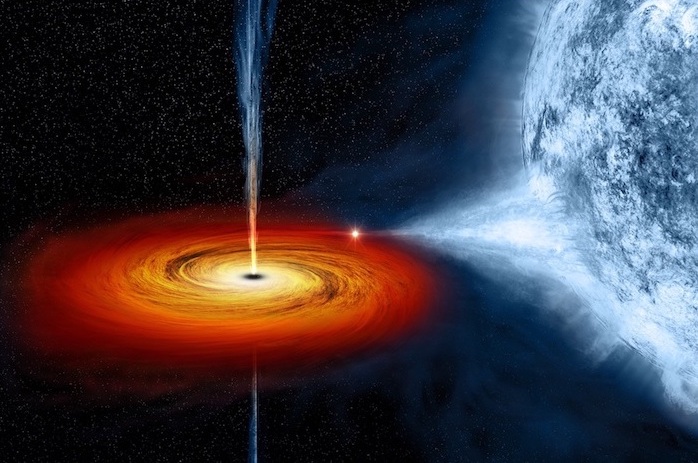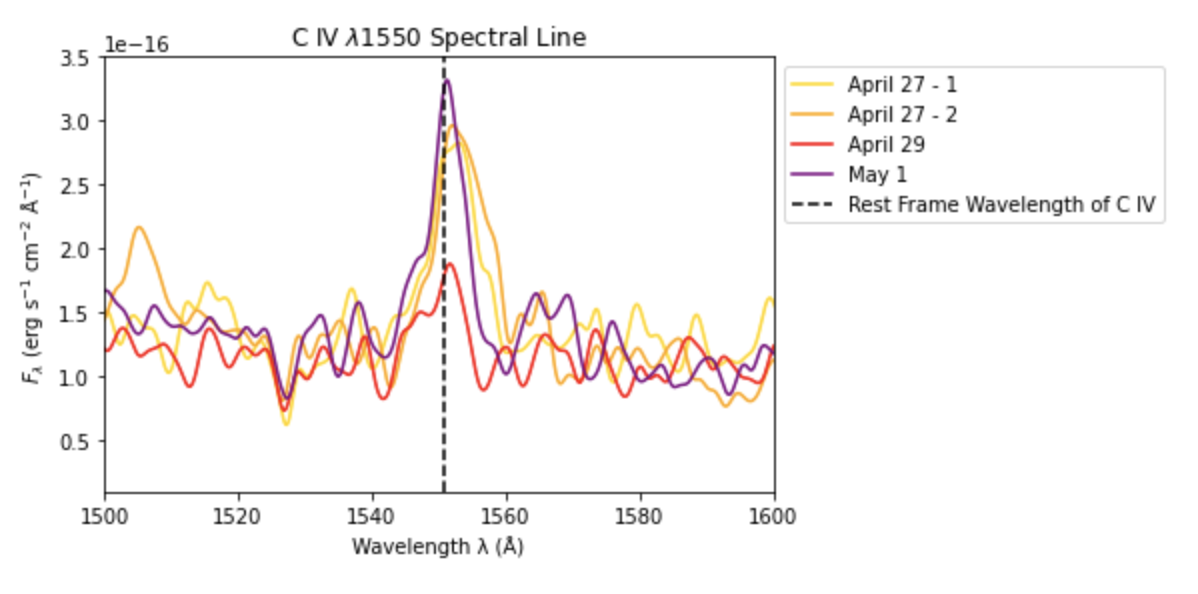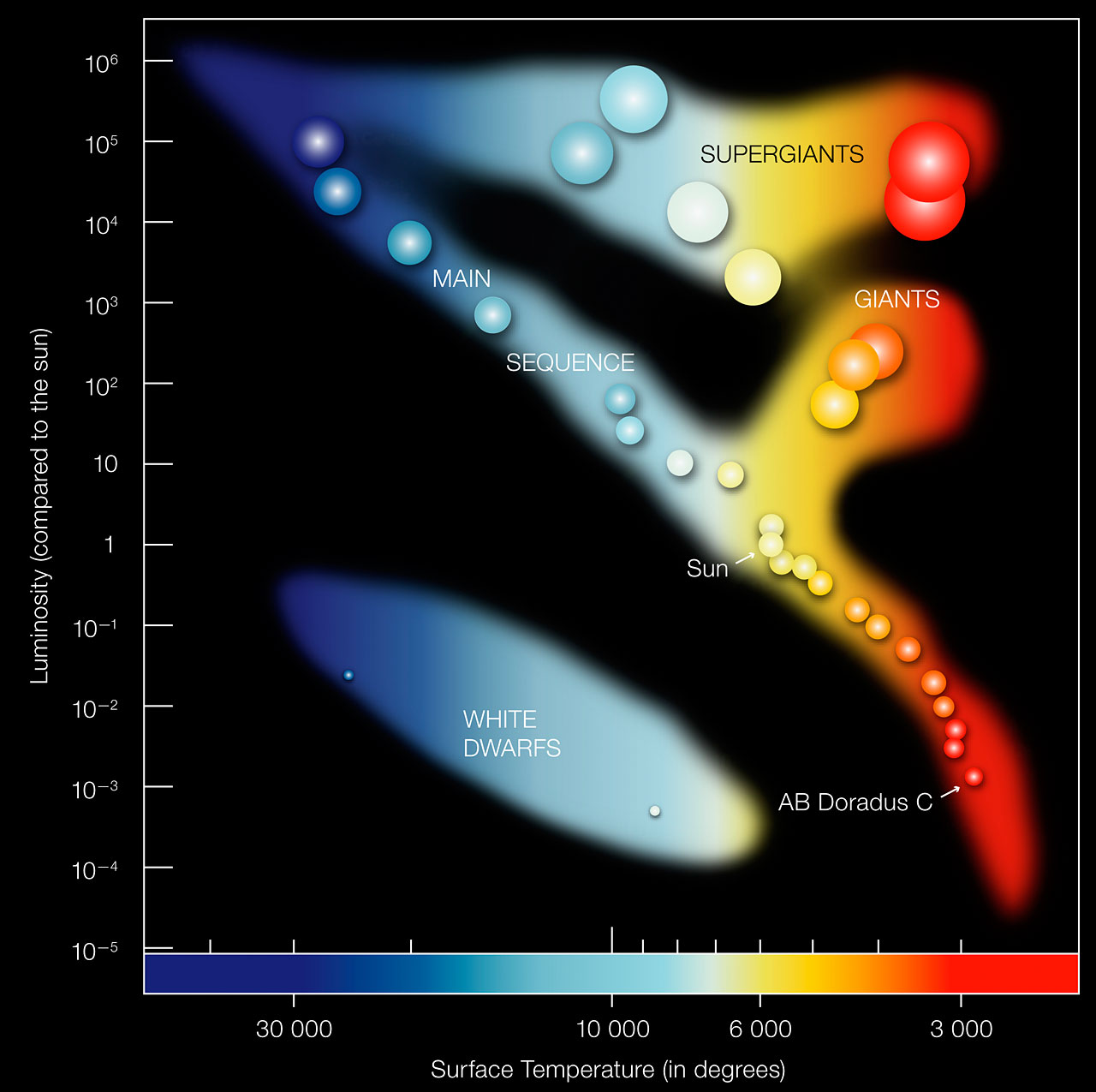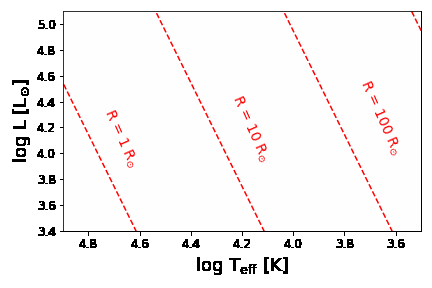
X-Ray Binary Systems
An x-ray binary system is a type of binary star system that emits a significant amount of x-ray radiation. It consists of two main components: a compact object, such as a neutron star or a black hole, and a companion star, which is typically a normal star like our Sun or a more evolved star.
During my research at Cal Poly Pomona, I studied the x-ray binary system called NGC 300 X-1, which has a highly evolved Wolf-Rayet star and a black hole.
Using Spectroscopic Data to Measure Radial Shifts
In my research, I utilized data from the Hubble Space Telescope to analyze the ultraviolet spectrum (a graph that shows the intensity of light being emitted over a range of energies) of NGC 300 X-1 and measure its radial velocity shift.
Radial velocity shifts in astronomy refer to the motion of an object, such as a star or a galaxy, along our line of sight. It is the component of an object’s velocity that is directed either towards or away from us.
Think of it this way: when you observe a moving object, like a car passing by, you can determine its speed and direction. Similarly, in astronomy, astronomers can study the motion of celestial objects by analyzing the changes in the light they emit.
When an object moves towards us, the wavelengths of light it emits shortens, making them appear slightly bluer on the electromagnetic spectrum. This is known as a blueshift. On the other hand, when an object moves away from us, the wavelengths of light get stretched out, resulting in a slight reddening of the light. This is called a redshift. You can see these redshifts and blueshifts in the spectrum I plotted below using the data from Hubble. The code I wrote to produce this plot is found here.

By measuring these shifts in the wavelengths of light, we can determine the radial velocity of an object. This velocity measurement helps us understand how objects move in space, how they interact with their surroundings, and even provides clues about the underlying physical processes occurring within them.
We focused on the \(C\) \(IV \) (Carbon 4) spectral line to measure the radial shift of the system. The radial velocity shift measurement provided crucial insights into the gravitational interaction between the black hole and its companion star which enabled us to recalculate the mass of the black hole within the binary system with greater precision. The radial velocity curve for the Wolf-Rayet star is shown below. It is the counterpart to the radial velocity curve of its companion black hole since they orbit each other.

Finally, we were able to calculate the mass of the black hole by using our radial velocity measurements and Kepler’s 3rd Law:

We found a black hole mass of \(17 \pm 4 \) \( M_\odot\). Results from this research have been published in The Astrophysical Journal, a top peer-reviewed journal.
GIF Visualization
In Spring 2021, I used the Modules for Experiments in Stellar Astrophysics (MESA) to simulate likely progenitor systems of NGC 300 X-1. To put simply, I forward simulated young binary systems to see what would produce a system like NGC 300 X-1.

A fun visualization that resulted out of this work is the gif below that shows how the Wolf-Rayet component of NGC 300 X-1 evolves throughout time. It is traversing the Hertzsprung-Russell diagram (HR diagram), is a graph that astronomers use to understand and classify stars based on their characteristics.
It provides a visual representation of how stars relate to each other in terms of their temperature and brightness. Stars with higher temperatures are positioned on the left side of the diagram, while stars with lower temperatures are found on the right side. Stars located higher up on the diagram are also brighter or more luminous, while stars positioned lower down are dimmer or less luminous.
The code written to produce the gif is found here.
